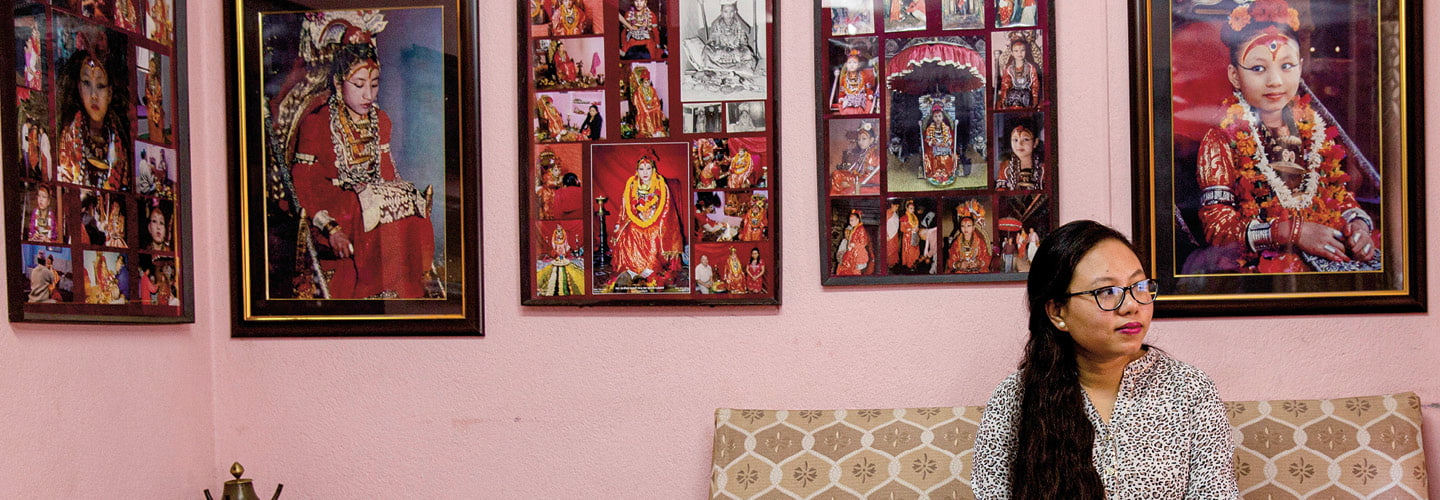During her 10 years as a child goddess in Nepal, Chanira Bajracharya spent her days receiving long lines of visitors. They would kneel at her feet and place offerings of cash and fruit into brass bowls as she wordlessly stretched out an arm covered in red satin, smudging vermilion paste on their foreheads as a ritual blessing.
Now the girl worshipped as a kumari—the living embodiment of a Hindu goddess—is a woman who works in a nondescript office in Patan, an ancient city a few miles from Nepal’s capital, Kathmandu. There, Bajracharya, who has a master’s degree in business administration, handles loan applications at a financial services firm.
Her ability to land a corporate job has set her apart from most other former kumari, most of whom were denied education.
“People used to think, ‘Because she’s a goddess, she knows everything,’” says Bajracharya, now 27. “And who dares to teach a goddess?”
The walls of her family home in Patan, where she performed her divine duties from the age of 6 until she was 15, are covered with photographs of her in full kumari regalia, a small girl with brightly painted lips and eyes lined with kohl, a traditional black eyeliner.
For 10 years, Chanira Bajracharya was a child goddess in Nepal. During that time, she spent her days receiving long lines of visitors. They would kneel at her feet and place offerings of cash and fruit into brass bowls. Without speaking, she would stretch out an arm covered in red satin and spread a bright red paste on their foreheads as a ritual blessing.
Now the girl worshipped as a kumari—the living vessel of a Hindu goddess—is a woman. She spends her days in an office in Patan, an ancient city a few miles from Nepal’s capital, Kathmandu. She works at a financial services firm, where she handles loan applications.
Most former kumari were denied education. But Bajracharya has a master’s degree in business administration. That has set her apart and allowed her to land a corporate job.
“People used to think, ‘Because she’s a goddess, she knows everything,’” says Bajracharya, now 27. “And who dares to teach a goddess?”
From the age of 6 until she was 15, she performed her divine duties at her family home in Patan. The walls of the house remain covered with photographs of her in full kumari regalia. They show her as a small girl with brightly painted lips and eyes lined with kohl, a traditional black eyeliner.

